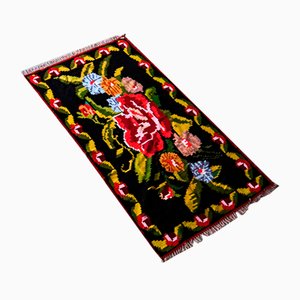Charles Rennie Mackintosh was a Scottish architect, watercolorist, and designer, who played an important role in the turn-of-the-century Post-Impressionist, Arts & Crafts, and Art Nouveau movements.
Born in 1868 in the industrial town of Glasgow, Mackintosh became interested in design and architecture at a young age. At fifteen, he enrolled in the Glasgow School of Art, where he befriended Herbert McNair (1868-1955), along with sisters Frances (1873-1921) and Margaret (1864-1933) Macdonald —his future wife. The foursome collaborated on designs for furniture, metalwork, and illustrations, developing a highly distinctive array of motifs, including abstracted female figures and swirling lines, reminiscent of illustrator Aubrey Beardsley. The aesthetic was deemed eerie (or “emo” in today’s parlance) by many of their contemporaries, who called Mackintosh and his group the “Spook School.” History has redeemed them, however, and their penchant for romantic and refined stylization has since been renamed “The Glasgow School” of the international Art Nouveau style.
In 1889, Mackintosh became an apprentice at the architectural firm Honeyman & Kreppie, where he made partner in 1901. Using a simple and unique vocabulary of roses, geometric patterns, and attenuated lines, Mackintosh’s designs demonstrated a break from traditional Victorian architecture at the time—as he believed that architects should have the artistic freedom to design as they like. His inspiration came from Celtic and Japanese art, the Scottish Baronial style, as well as progressive art and architecture theorists, like William R. Lethaby (1857-1931), Charles Voysey (1857-1941), Richard Norman Shaw (1831-1912), Augustus Pugin (1812-1852), and John Ruskin (1819-1900). Mackintosh's architectural projects include the Glasgow Herald Building (1894) and several buildings for his alma mater, the Glasgow School of Art (1986-1909). Mackintosh was also famously commissioned by patron Catherine Cranston to design the Willow Tearoom interiors (1897-1917) and furnishings, which include the Argyle Chair (1897) and Willow Chair (1904). For his other patron, W.W. Blackie, Mackintosh designed the iconic Hill House Chair (1902), which was heavily influenced by Japanese design.
Unfortunately, Glasgow was not large enough to support the fame and recognition that Mackintosh coveted, so he sought out other places to work, such as Germany and Austria, where he was very well received. He was commissioned to design the Warndorfer Music Salon (1901) in Austria, as well as the Mackintosh Room at the 1902 Turin International Exhibition in Italy.
Mackintosh died in London in 1928 unware of the impact his designs would bear on future generations. By the end of the 20th century, he had posthumously achieved his much desired fame. Today, he is recognized as a key pioneer in modernist design.




















Get in Touch
Make An Offer
We noticed you are new to Pamono!
Please accept the Terms & Conditions and Privacy Policy
Get in Touch
Make An Offer
Almost There!
To follow your conversation on the platform, please complete the registration. To proceed with your offer on the platform, please complete the registration.Successful
Thanks for your inquiry, someone from our team will be in touch shortly
If you are a Design Professional, please apply here to get the benefits of the Pamono Trade Program